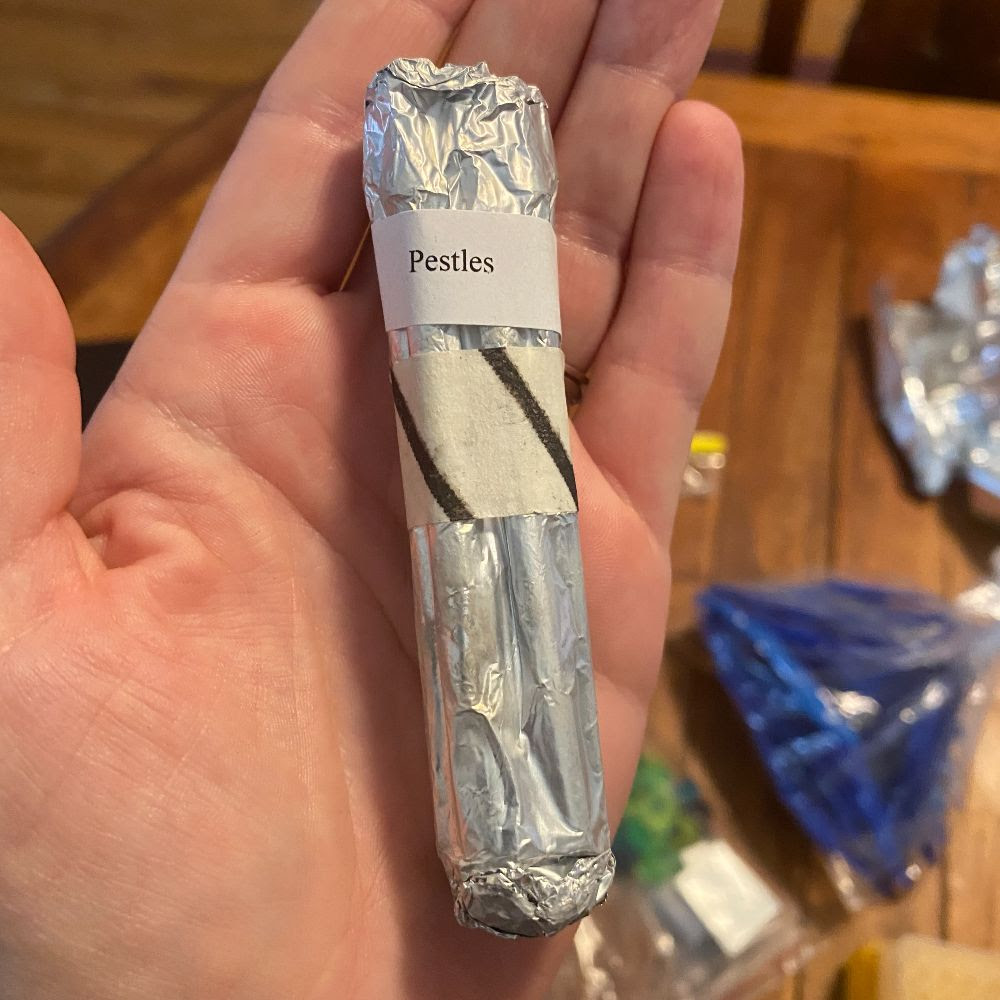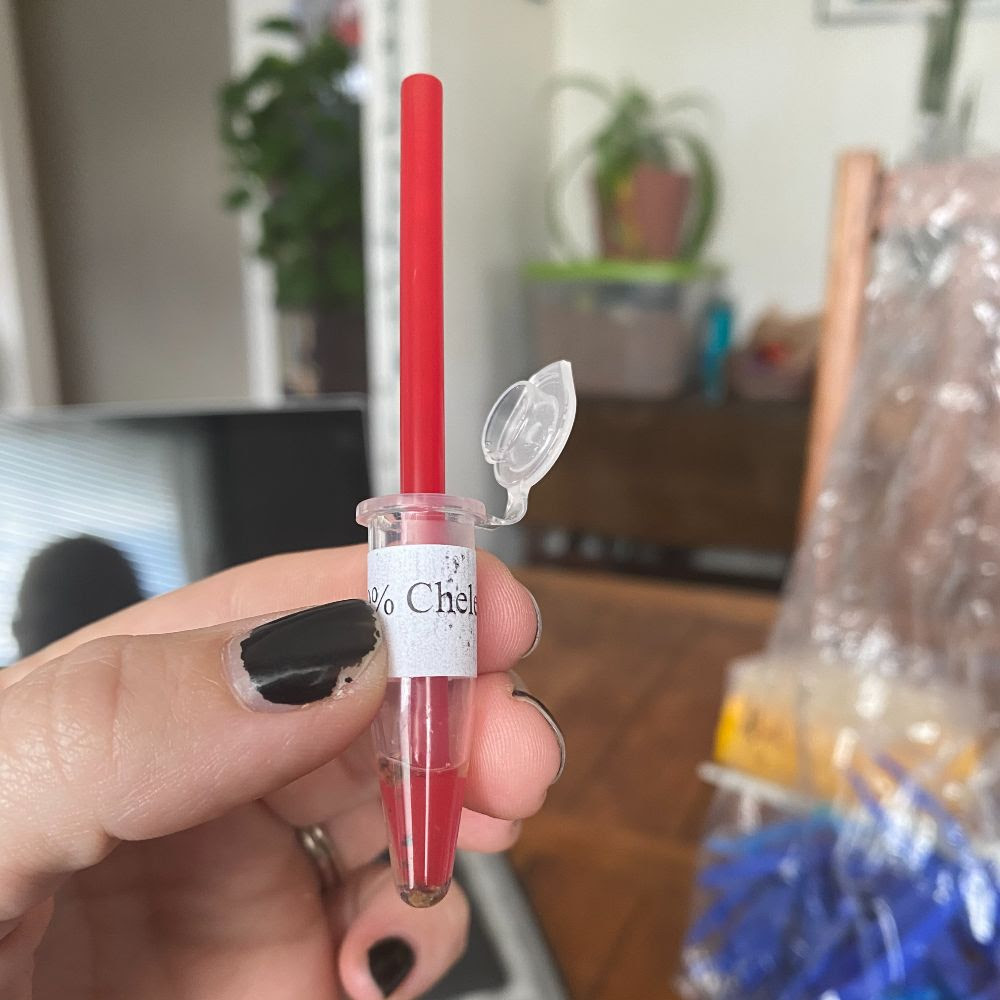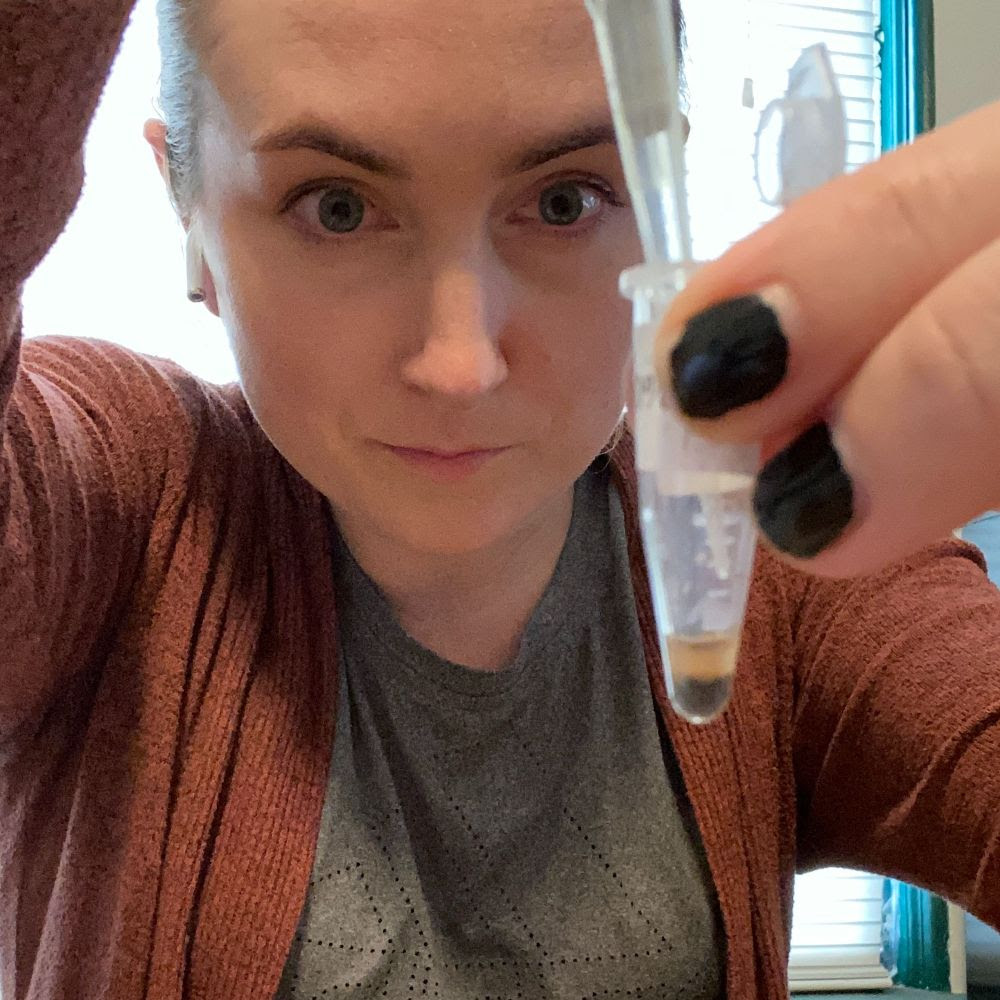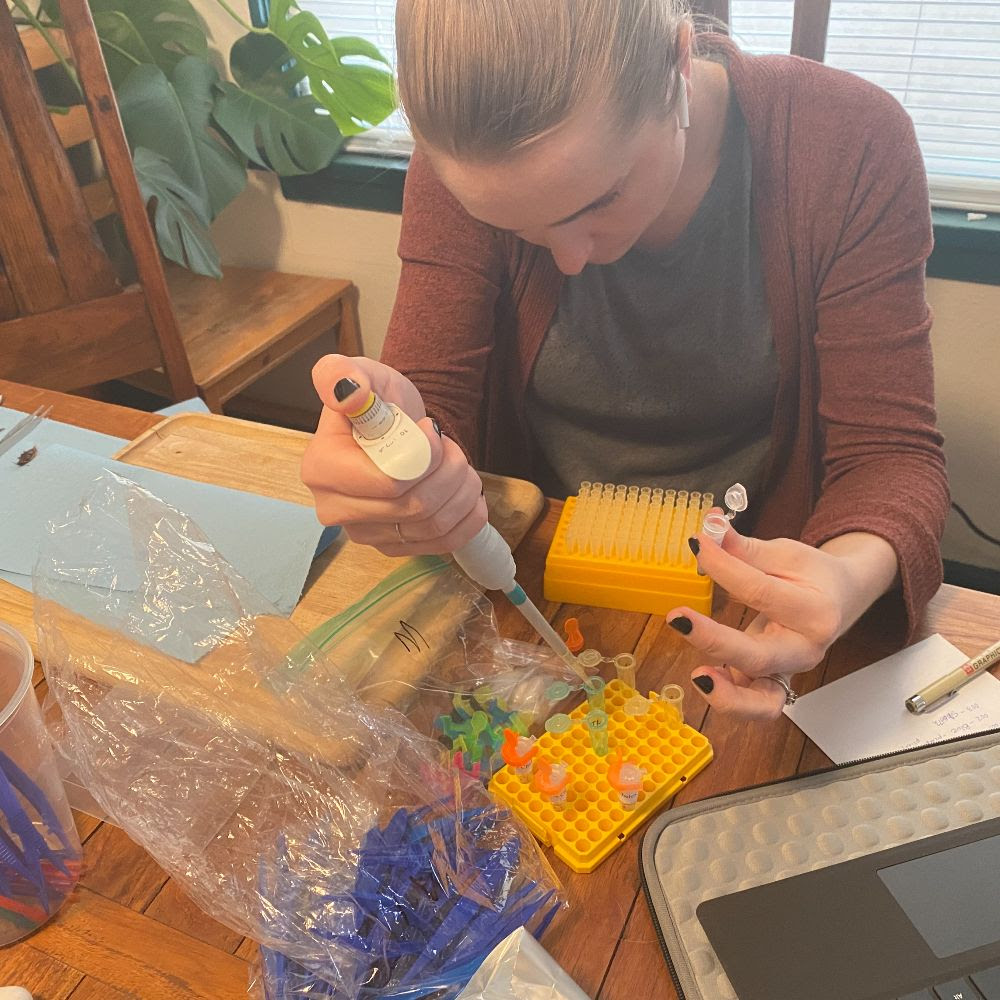Welcome Back to the Lab!
We’re on to the next step in our Barcoding US Ants project! Now that we’ve collected our specimens, it’s time to do some hard science: We need to extract and isolate DNA from our samples before it can be amplified and sequenced.
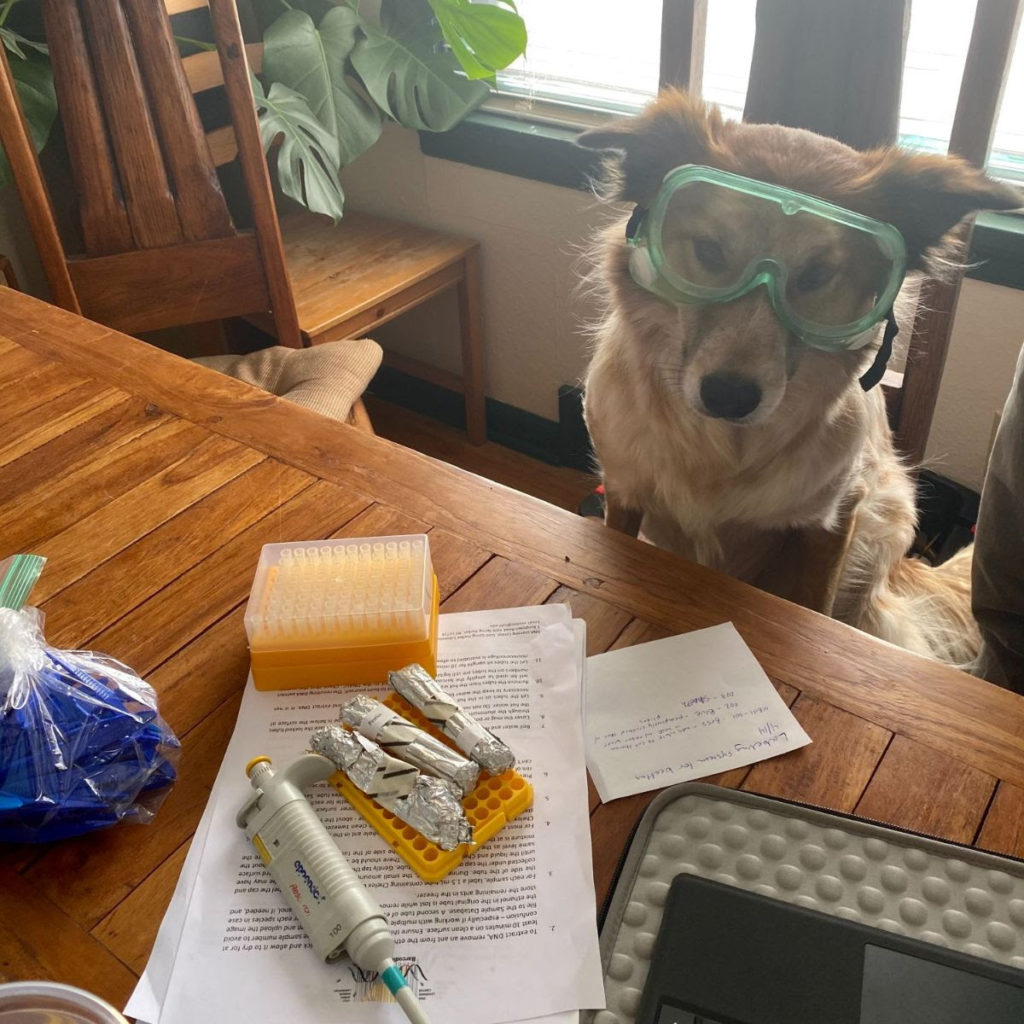
DNA is packaged neatly within our cells; the long, double helix strands are wound and and tightly compacted within our chromosomes, which are in turn found in the cell nuclei. The idea of extracting and isolating a molecule that is so small that it is contained within our already microscopic cells sounds extremely daunting. But the technology behind DNA barcoding has come so far in the last decade that it can easily be done outside of a laboratory setting. For this round of extraction and isolation, I set up the experiment at my kitchen table.
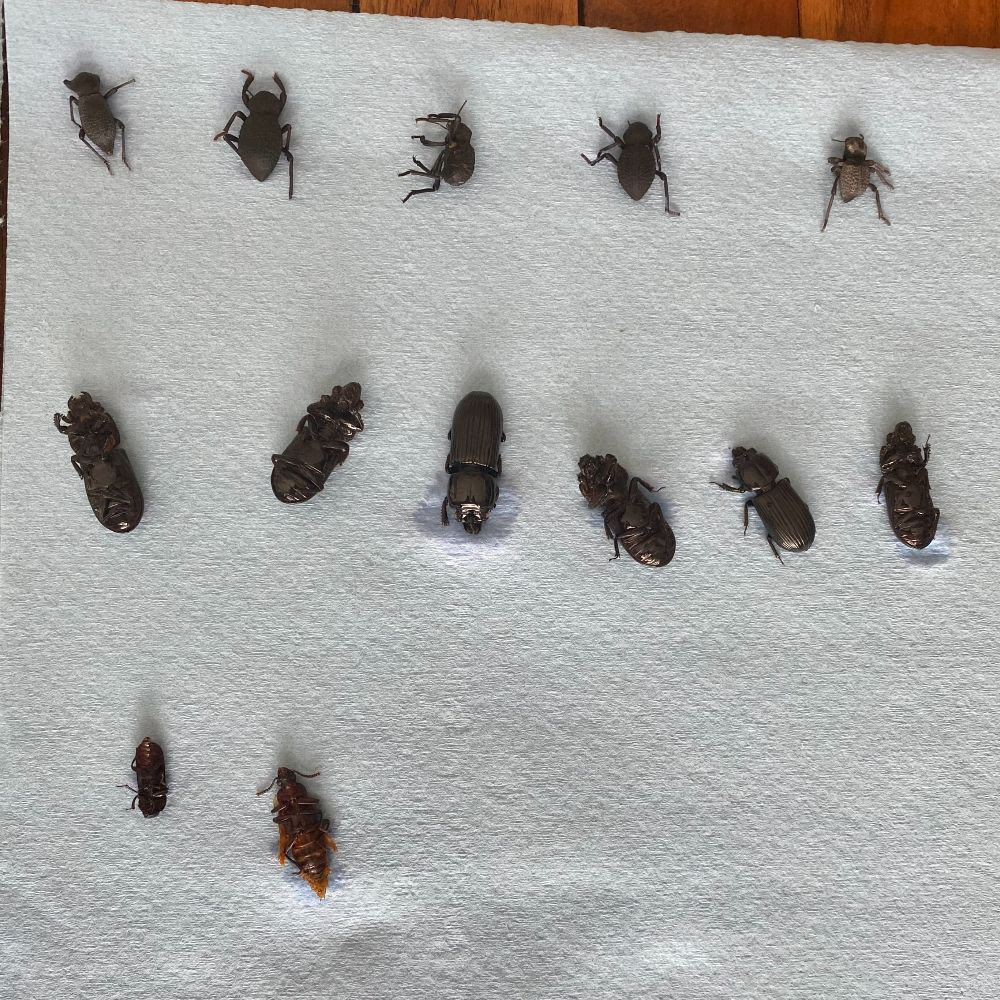
After specimens are collected in the field, they should be kept in a 70% ethanol solution until they are ready to be used in the extraction process. Keen eyes will notice that the samples above… are not ants. Regardless, the process is the same. The samples must be dried out thoroughly before extraction can begin.
Once the specimens are dried, tissue samples have to be taken. For invertebrates as small as ants, sometimes an entire ant is used as the tissue sample. For larger ants or other invertebrates like these beetles, only a small portion of the body can be used, such as a leg or a section of the thorax.
The tissue sample is then ground up into a small vial using a clean, sterilized pestle.
In addition to the ground tissue sample, the vial contains a material known as Chelex. Chelex is a resin that helps separate DNA molecules from other compounds in the tissue sample, including DNA-degrading enzymes that might otherwise destroy the sample. Once the tissue sample is finely ground in the vial of Chelex, it is placed in a hot water bath to help further break the cells open and expose the DNA.
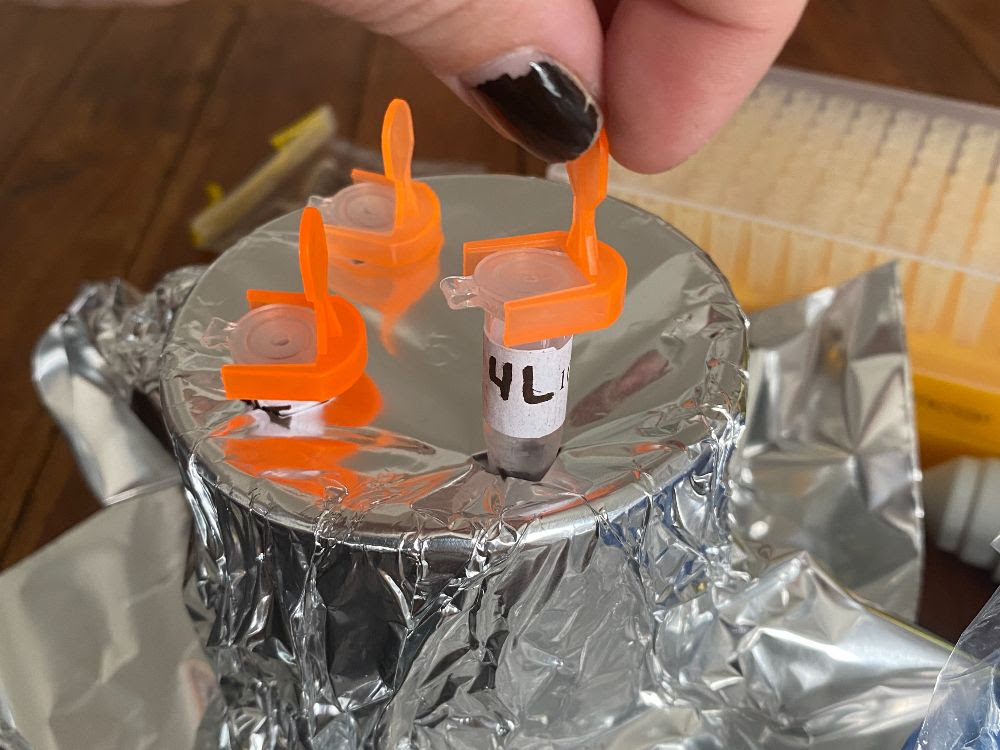
Once the DNA is separated from the rest of the tissue sample, the Chelex and leftover tissue will sink to the bottom of the vial, while the DNA remains suspended in an aqueous solution on the surface. At this point, it can be extracted and placed in a separate vial for storage.
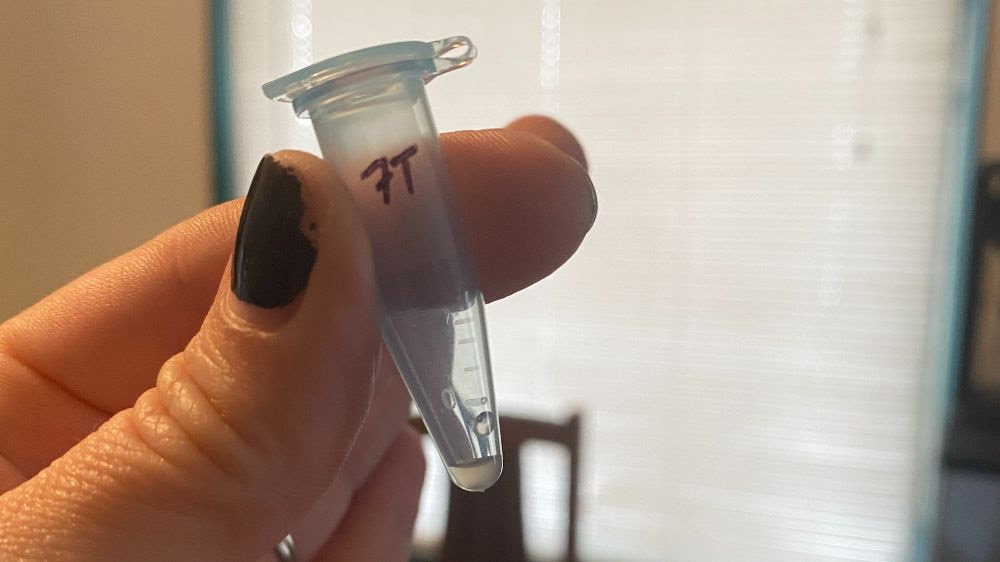
Next week, we’ll dive into PCR and the process for amplifying (or copying) DNA. For now, our DNA product will be stored in the freezer.
Until next time, thanks for visiting the lab!
Bug Wrangler Brenna
brenna@missoulabutterflyhouse.org
If DNA workshops sound like something you’d like to participate in, then stay tuned! After all, Barcoding US Ants is a community science project, and we want to involve you, the community. For more questions, email me at brenna@missoulabutterflyhouse.org and put “Barcoding US Ants” in the subject line.
